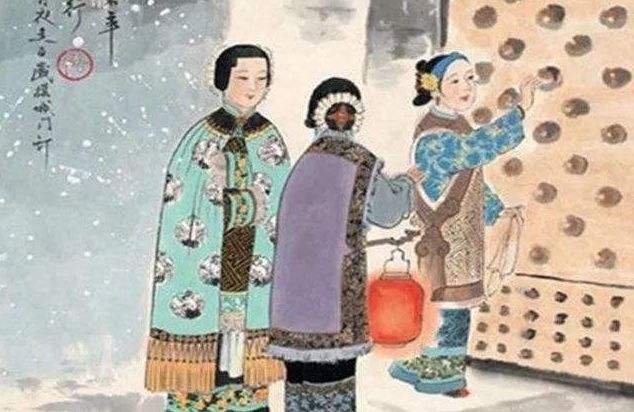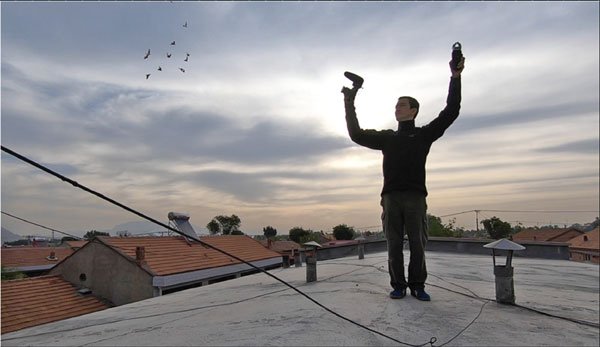
Original Maps Sale
We have around 100 original maps of Beijing and China for sale at Beijing Postcards gallery this summer, email us to make a reservation if you’d be interested: info@beijing-postcards.com

New Cushion: A Unique Peek into the Qing Dynasty
We have recently collected a fascinating picture of a Qing official and his impressive attire, and made both a reproduction picture and a cushion using this fascinating peek into the workings of imperial China.

The Greatest Map of Beijing Ever Made
It is rare that the very soul of a city is captured in a map, but the famous pictorial map of Beijing made by Frank Dorn in 1936 achieves exactly that.

In 1929 Chiang Kai-shek Tried to Abolish Chinese New Year
In 1929 Chiang Kai-shek tried to abolish Chinese New Year. It sounds like something out of a fairy tale, because who other than the most terrible monstrous villain would ever think about cancelling the most important family gathering of the year.

The Forgotten Time Keepers of Old Beijing
When the sky darkened in the capital of China during the dynasties, the sound from the Drum and Bell Towers dictated the massive city gates to shut.

China's First Constitution Was Written in the Temple of Heaven
Even after the last emperor abdicated, the young republic could not ignore the importance the Temple of Heaven

The Orthodox Monk who Brought China to Russia
Father Hyacinth Bichurin led the Russian Orthodox Mission to Beijing from 1807 to 1821. During his time in China he learned fluent Manchu, Mongolian and Chinese and made some of the most accurate Qing dynasty maps of Beijing.

The First Parliament in Beijing was Located at the Elephant Stables
From Imperial elephants to political animals

Famous Liars of Beijing
In and around the end of the last dynasty in 1912, Beijing became a breeding ground for liars and cheats. Decadent and corrupt government structures combined with poverty and desperation created the perfect atmosphere for such people to emerge. We have chosen three thrifty liars that all have the one thing in common, that it is still discussed to this day to what extent the accounts they have left us with can be trusted.

The Road that Shaped Beijing and Its Revolutionary Nemesis
When Kublai Khan decided to place his capital in Beijing 800 years ago, the first thing he did was to determine the city’s central axis

The Central Axis Scarf
Beijing is built around a 7.8 km long central axis. The famous city planner Liang Sicheng called it the spine of the city. All of the most important pieces of architecture were placed either directly upon the axis or along it in a perfectly balanced symmetry.


Taste the Magic Beijing Beverage that Drains the Heat Away
How did the old Beijing cope with summer heat?

The History of lazy Hutong living
People biding their time in the hutong alleyways playing chess on the ground or attending to their birds and other hobbies is almost a caricature of life in old Beijing.

Women Hold up Half of the Sky
In 1950, the great socialist leader Mao Zedong put all his political weight behind a new marriage law. Women’s rights were for the first time recognized as being equal to the rights of men.

The History of Women in Beijing
Strict Ming and Qing dynasty societal norms confined Han Chinese women to the innermost of courtyard dwellings for most of the year, but at the end of the Chinese New Year celebrations - on the sixteenth day of the first lunar month - it was different.

Beijing's Revolutionary Road on A Scarf
We have dug into the history behind Beijing’s revolutionary road and created a unique scarf out of an originally confidential map we have recently collected.

The Vanishing Voices of the Capital
A city with no windows - a new display about the sounds and symbols of old Beijing

Old Beijing Shop Signs Tea Towels - the Code Language of the Capital
We recently stumble upon the fascinating forest of Qing dynasty shop signs, that originally dangled outside shop fronts in the dusty streets of Beijing.

Republican Map of Beijing c.1924
After the Qing dynasty collapsed, the republican Peiyang Government felt the need to unify the major ethnic groups as one nation, the Five Colour Flag was thus created as the national flag, representing the concept of Five Races Under One Union.